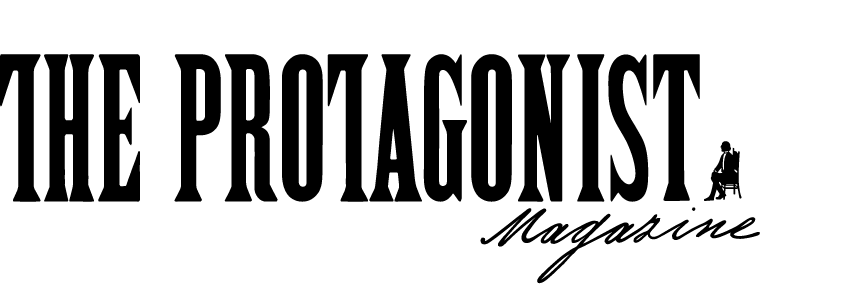Leslie Hakim-Dowek and Beirut’s Stark Realities
Light Levant Sparrow Hawk
“But a day will come when we will direct our ploughshares to their obese and debauched hearts.”
“In this suburban landscape, exotic trees such as cypresses or junipers create contrasts between marred manmade scenes and natural beauty.”
The Migratory Storyteller
Leslie Hakim-Dowek and Beirut’s Stark Realities
WRITTEN BY SARA MAKARI-AGHDAM, 10.03.2022
PHOTOGRAPHY BY LESLIE HAKIM-DOWEK
Shop in Little Armenia
Cafe Avo
Consulting Room
“You have resisted to liberate your blood from the garages of grease and your mouth from the sugar warehouses and your bones form the seats of the Beyks and the charlatans. Every morning, a gun falls on the mountain and we are but silent witnesses. But a day will come when we will direct our ploughshares to their obese and debauched hearts.”
– Abbas Beydoun, Ya Ali, 1973
Damaged Wall
Corridor in Hospital
Shop Window
Clicking through the dozens of everyday photographs taken by the Lebanese artist Leslie Hakim-Dowek in her series Where Do Swans Come From? (2016) concrete brutalist-like buildings meet Wedgewood-blue skies. Grubby streets are strewn with cars, people’s laundry blows – in what one would imagine to be a light wind with the taste of dust on apartment balconies. In this suburban landscape, exotic trees such as cypresses or junipers create contrasts between marred manmade scenes and natural beauty. The artist provides snapshots of domestic interiors, shops and cafes. Hospitals are shown with worn-plaster-corridors and her lens examines rooms drowning in peach floral curtains. A damaged wall in the same compound resembles a nearby slaughter house where dried blood is shown still on the hooks. Interspersed between these images are portraits of Beiruti youths. There are three sub-sections to Where Do Swans Come From? together forming a layered representation of youth within segregated communities and living with the complex legacy of conflict and chronic decay, instability and a toxic environment. A central segment titled Along the Beirut River focuses on the Armenian community through the symbolism of the river itself, which forms the boundary between the two Christian and Armenian Orthodox neighbourhoods.
Talar
Vana
Carole
Michel
In Ottoman-ruled Lebanon, Muslims were a protected community. But after WW1, Western colonial powers took over Ottoman holdings in the North Levant. Even before the mandate the French had favoured Maronite Christians, and under the new administration gave them a state, despite Muslims making up the majority population. By 1943 Lebanon had declared its independence from France, and in 1975 the conflict of disproportionate political power within the country led to civil war. In 1915, under the orders of de facto Turk leader Talaat Pasha, over a million Armenians were subject to ethnic cleansing and forced to flee, many taking residence in Lebanon, which, with its mountainous terrain, has long been a place of refuge for the persecuted. Turkey still does not acknowledge the genocide committed against the Armenians, Assyrians and Greeks, and much on-going conflict and instability still stems from the colonial carving up of the Middle East early last century. The Martyrs’ Monument, built to honour the Lebanese Nationalists executed for challenging Ottoman rule appears in a postcard in Along the Beirut River – a happy souvenir becomes a reminder of a dark page in history. Armenians, like all people living in Lebanon, now have to endure the fate of a country in total collapse, with circumstances tragically exacerbated by the Beirut blast that occurred on 4th August 2020, and issues such as the fight against the climate crisis that are only undermined by continuing segregation.
Postcard of Bay of Jounieh
One of the pictures included in Along the Beirut River is an illustration of the Levant sparrow hawk. A small raptor with a jewel grey-blue head and a chest of golden feathers with inky brushstrokes, the bird is a migratory species. A vast number of these birds are found in Armenia, as well as Lebanon. It is said by naturalists that 2.6 million birds are hunted, trapped and killed every year in Lebanon, and this might be seen as mirroring the suffering of the Armenian people. The birds make their nests in the various types of forestry found in Lebanon including rich orchards of pomegranates and apple trees. In fact, in Lebanon figbirds, Tiyyane, تيّان, with their plump juicy little bodies are considered a delicacy by locals, doused with pomegranate molasses and sumac or olive oil. Sometimes, to catch these birds, electronic devices mimic the bird’s song attracting them before having their fragile necks snapped by human hands.
The Leftist writer Abbas Beydoun, with whom this text began, said that violence itself “is an essential factor in one’s relationship with the world.” His poetry speaks of a post-apocalyptic society characterised through erasure of history, lack of culture, bleakness and decay; it is this very bleakness that Hakim-Dowek conveys through her photographs of desolate scenery, and in the portraits of the Armenian youth who stare away from the camera, not smiling. The future facing these youths, a continuously marginalised minority group, seems hopeless and, as the artist declares, “even more so now.”
The Beirut River in July
Warehouse in Karantina
Street in Bourj Hammoud
Hospital Facade
All works above are from the series Where Do Swans Come From? (2016) by Leslie Hakim-Dowek.















